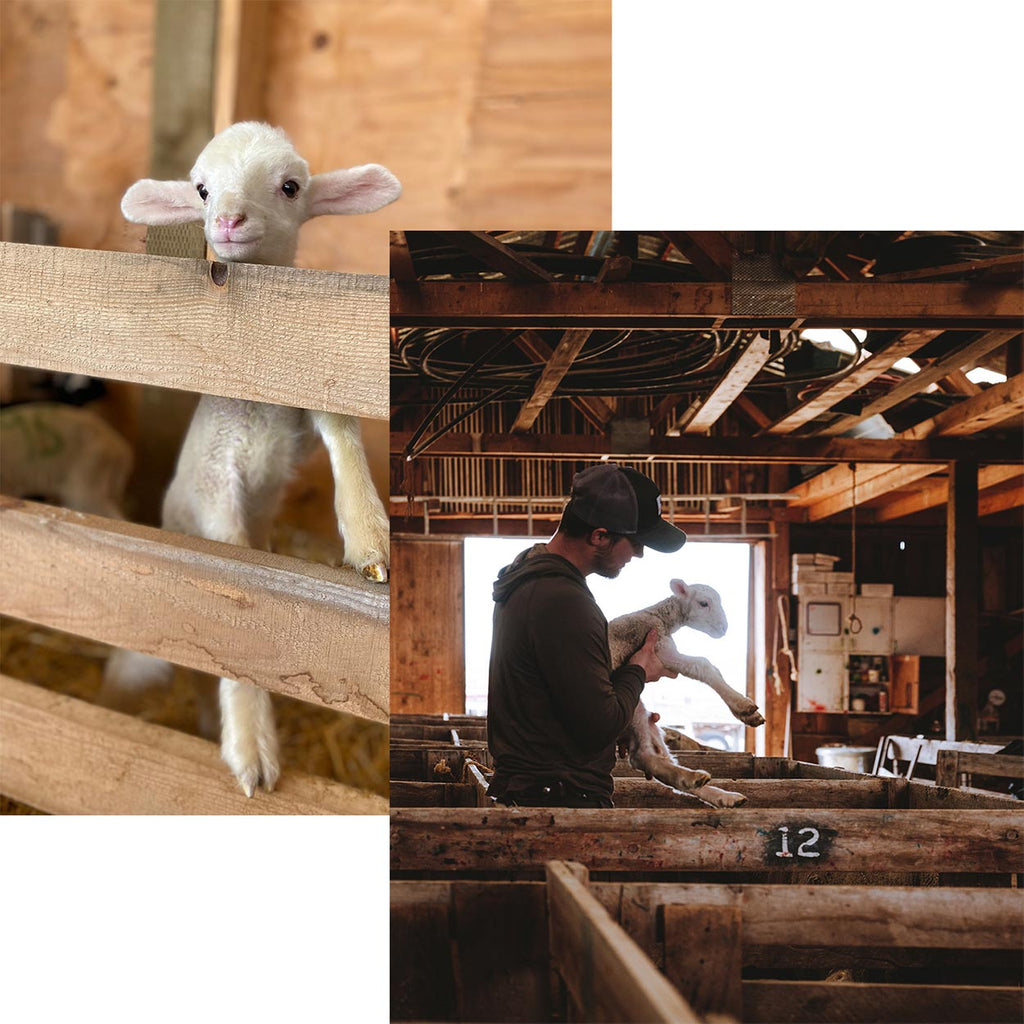Lambs: goofy, awkward, wobbly kneed, hopelessly shy, and unfailingly cute. They come at a time when the ranch undergoes tremendous change, when the creeks and rivers gain new vitality from snowmelt and spring rain, leaves begin to form on the cottonwoods, and green shoots emerge from the earth's brown and barren crust. And their innocent faces not only usher in a new season here at the ranch, but also represent the future of our entire family business - a successful lambing is one of our most essential duties.

The next generation of Helle ranchers gets familiar with the next generation of Montana Merino sheep.
Each spring, some 5,000 new lambs come into this world in our pastures, new life carrying a tradition spanning over 150 years on this very spot in Southwest Montana. For us, it's a spiritual reset, a chance to slow down momentarily and appreciate the things they embody: motherhood, family, and new life.

We provide our pregnant ewes with a safe and insulated place to give birth, herding them into the low-lying corrals adjacent to the ranch house. There, they feed on a mix of alfalfa hay and silage, helping them develop rich and plentiful supplies of milk. Typically, the birthing process is quick and easy for the ewes, most often giving birth to twins - though triplets are not uncommon, and once or twice a year a mother gives birth to four babies!

Is there anything cuter than a little lamb? Eventually, this little guy will grow strong enough to survive the conditions found in the mountains surrounding our ranch.
Immediately following the birthing process, we bring the ewes and their newborns into the barn to ensure a healthy, warm, quiet start, as the first 48 hours of a lamb's life are critical. While a lamb is able to stand within five minutes of giving birth, it's more important they nurse within the first hour. Why? Lambs are not born with a developed immune system, and receive essential antibodies and nutrients from their mother's milk (specifically, the colostrum).

This quiet time also serves to form a strong bond between mother and lamb, as they will soon mix with other ewes and lambs. Ewes have the ability to recognize their lambs' bleats through a crowd of thousands, which allows them to connect even if temporarily separated. Without this ability, our job would be hundredfold more difficult, and is a remarkable adaptation for these natural herd animals.

Gangly and awkward, the lambs enter this world in the comfort of a warm barn, with mom close by.
For two weeks, the new mothers will live in pens with their babies and up to 30 other new moms, before turning out to pasture in groups of 250. That time is equally critical in the lambs' lives, as they must gain the weight and strength to endure Sheep Trail: the last Odyssey of North American agriculture, an annual six day-journey on which 8,000 sheep traverse nearly 50 lateral miles and thousands of vertical feet within the rugged wilds of Southwest Montana’s Gravelly Mountains.



















